Digital audio 01
Introduction - what is digital audio?
- Video
- Script
Welcome to this introduction to our videos on digital audio theory.
Analogue audio is a method for representing the unique shape of a changing air pressure energy soundwave in another form of energy, such as electricity or magnetism, in order to transmit, process, amplify or store it.
In essence, a pattern of changing air pressure energy is converted by a microphone into an electrical pressure signal which retains the same pattern. The signal may then be processed, amplified and sent to a loudspeaker system, or converted to a pattern of magnetic flux stored on analogue recording tape.
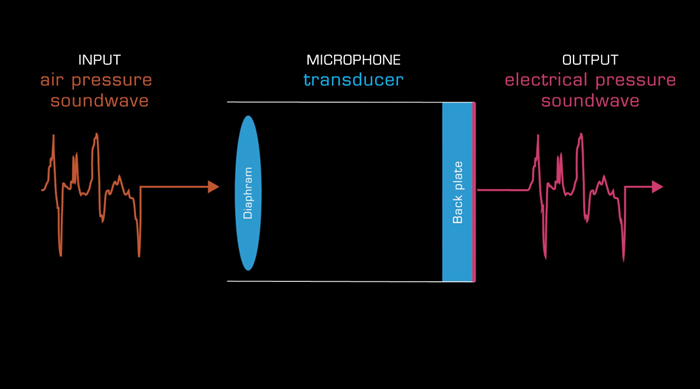
Electrical analogue audio signals may also be originated within the electronic circuits of an analogue oscillator.
So what then is digital audio?
Caption - What is digital audio?
Digital audio is a method of representing sound with binary code. It takes the form of a mathematical description of the shape of a soundwave and offers several advantages over the representation of sound in analogue electrical and magnetic forms.
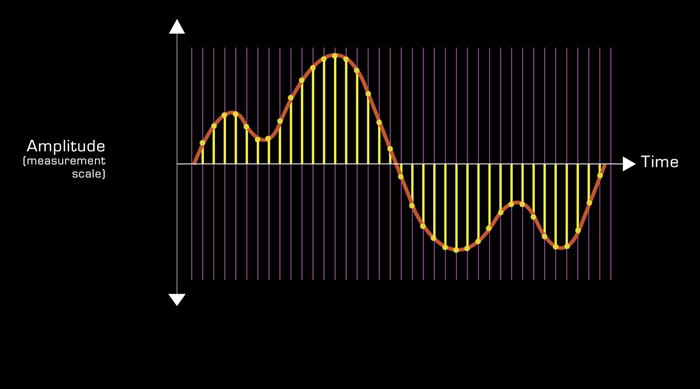
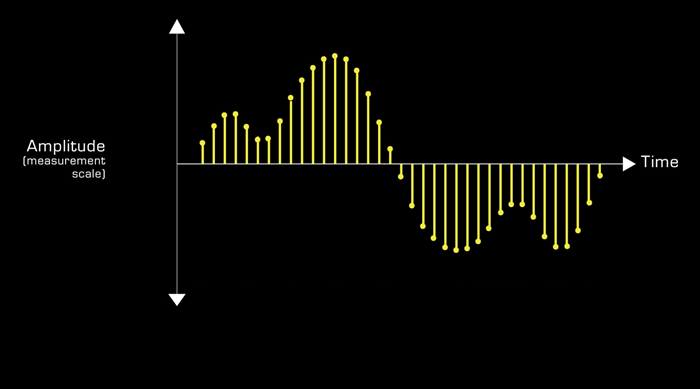
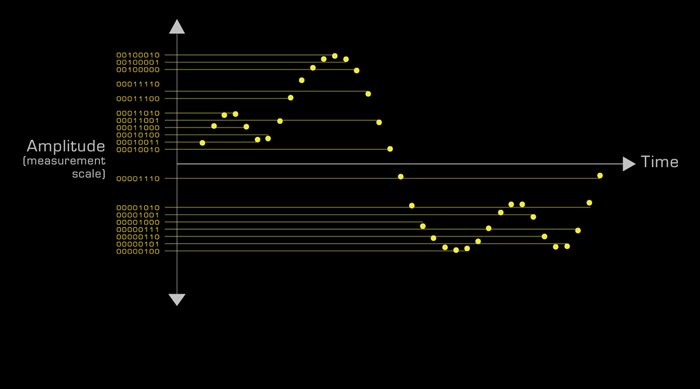
These advantages include ..
digital audio can be stored and transferred in a wide range of physical forms
digital audio can be edited non-destructively and processed by software algorithms and applications
digital recordings benefit from easy non-linear access
digital audio has the potential for wider dynamic range and much low distortion than analogue
digital audio is simple to distribute across networks
and ...
data is easily cloned
Caption - How are digital audio signals originated?
A digital audio signal can be created from scratch in software (pause) or derived from an analogue audio signal via a process known as analogue to digital conversion. By studying analogue to digital conversion we can arrive at a useful understanding of what digital audio is and what properties determine its quality.
Caption - Why is an understanding of digital audio theory useful?
There are many compelling reasons for home and project studio owners to learn basic digital audio theory, including ..
1. to ensure robust and secure data storage and file management procedures are understood and implemented
2. to be able to make informed decisions about digital gain structures
3. to be able to successfully configure analogue to digital audio converters to produce the required results
4. to be able to successfully synchronise a network of digital audio devices
5. to be able to identify, diagnose and remedy digital audio problems
.. and ..
6. to be able to make informed decisions regarding file formats for production, mastering and network distribution
Caption - Do we need to understand sound wave theory first?
Digital audio theory knowledge is as important as, and depends upon, a comprehensive understanding of sound wave theory, so if you are not familiar with concepts such as frequency, harmonics and amplitude you should watch our Sound Wave Theory videos first.
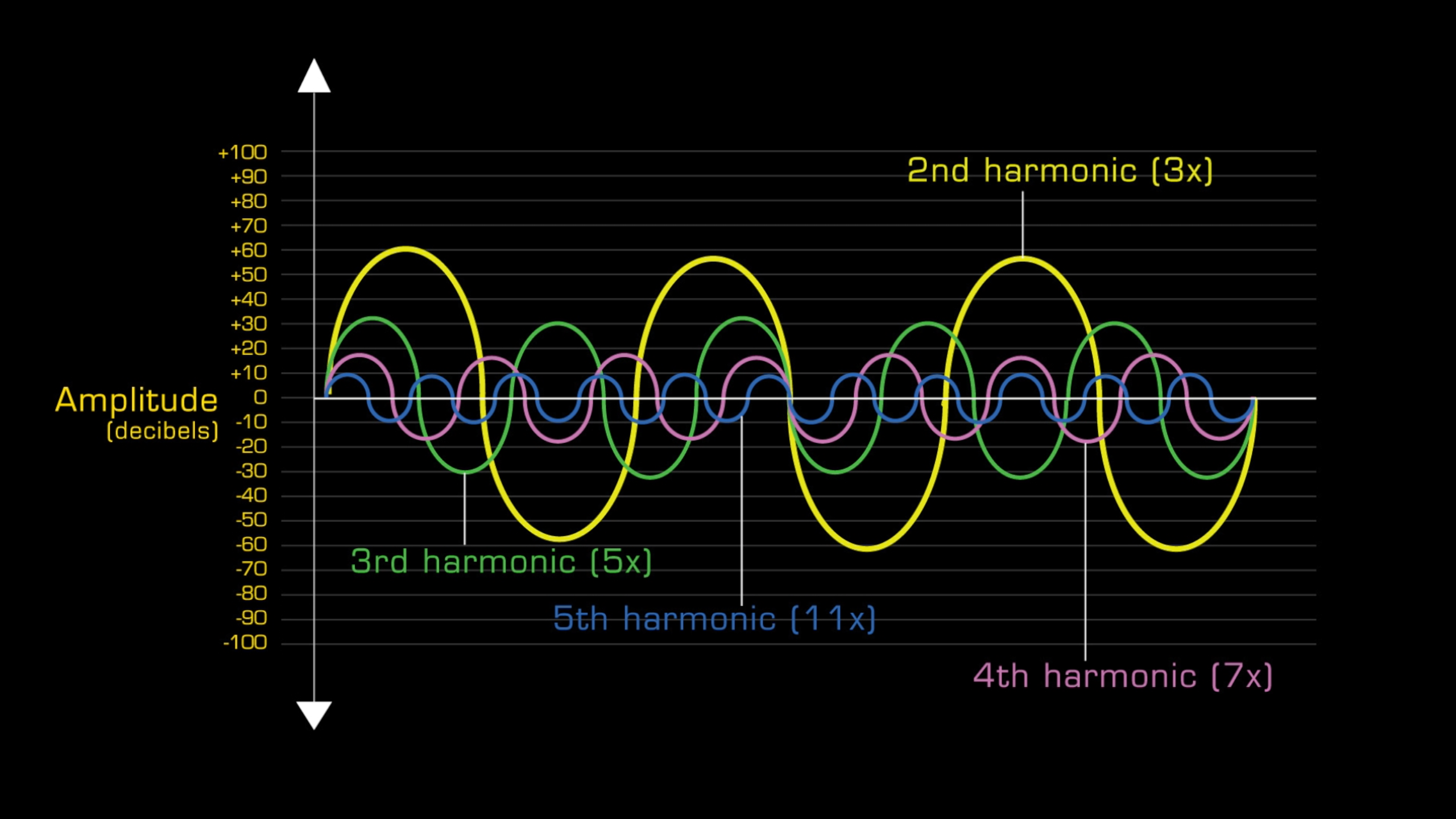
Caption - How hard is it to learn digital audio theory?
Although learning digital audio theory is challenging, it is comforting to know that ..
1. sound engineers only need know a fraction of the theory required by designers of digital technologies
.. and ..
2. we only have to learn the theory once, the fundamentals have not changed in decades and are unlikely to do so any time soon.
Caption - What needs to be learnt?
The six primary digital audio subject areas that home and project studio owners need to know are ..
1. binary counting systems and units of memory and storage
2. Data size, capacity and rate
3. analogue to digital conversion, including the 2 primary properties of digital audio .. sample rate and word length
4. digital audio file formats
5. digital interconnection
6. latency
Caption - Thanks for watching
The script for this video, with accompanying images, can be found at projectstudiohandbook.com
We suggest you subscribe at our YouTube channel, and join our mailing list at our website to receive notification of new videos, blog posts and subscriber only extras.
Thanks for watching.